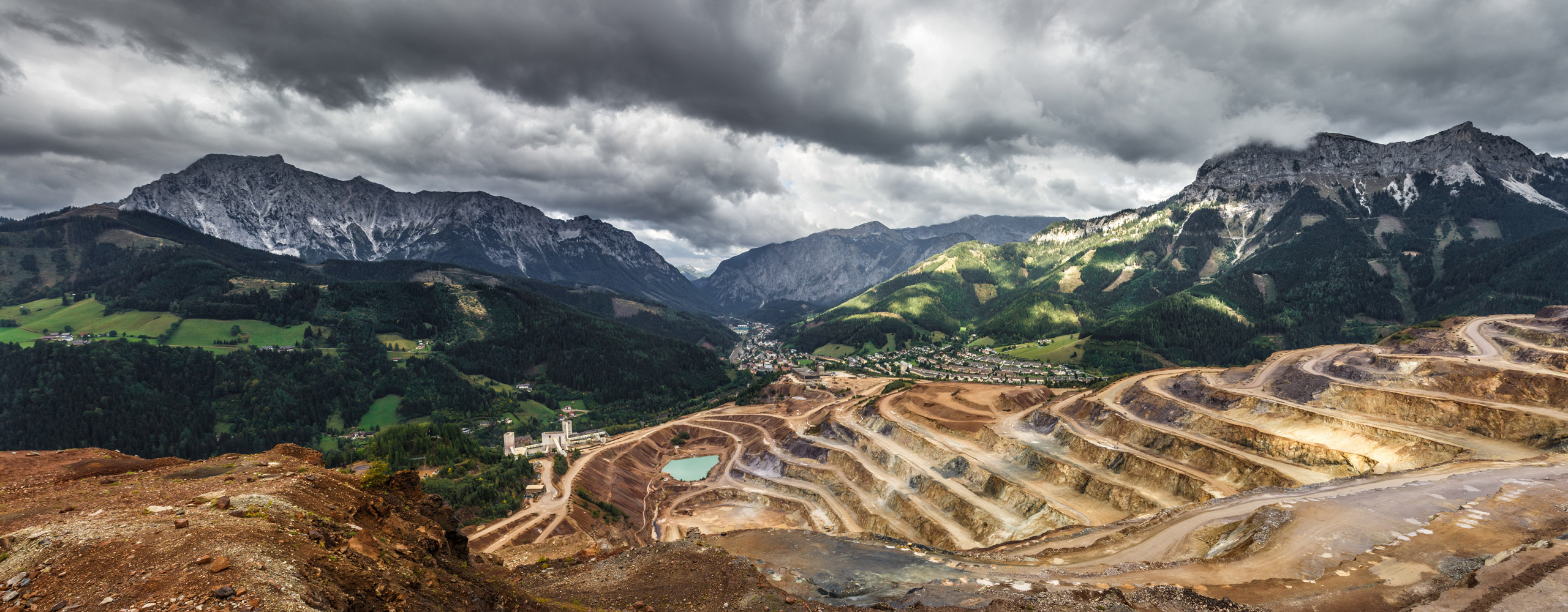
Laver Rock Mechanics Pre-Feasibility Study (2013)
Boliden is investigating the Laver low-grade copper deposit for potential future mining. The old Laver deposit was discovered in the 1930s, and was operated between 1938 and 1946. Mining was primarily conducted as small-scale underground mining, but a small open pit was also in operation at that time. The currently investigated deposit is of larger scale and with lower grades. Investigations have been on-going since 2008, including geophysical investigations, outcrop mapping, sampling of drill cuttings, and diamond core drilling. The mineralization is not defined at depth and/or in strike extension.

Improved Blasting through Precise Initiation (2013)
Using blasting caps with electronic delay units, and programmable delay times down to 1 ms, it has become possible to employ wave superposition in rock blasting. It has been hypothesized that fragmentation is improved in areas between blastholes where the tensile waves meet, overlap and interact. An improved fragmentation can, in turn, result in reduced costs for both blasting and transportation of the blasted rock, improved environmental aspects, and reductions in energy consumption during crushing and grinding of the blasted rock, as well as improved metal recovery. In this project, the above hypothesis was further studied in conjunction with developing computational tools for simulation of blasting with electronic programmable delay caps.

Crookston Landslide Stabilization (2013)
In 2003, a landslide developed along the Red Lake river bank inside the city of Crookston, Minnesota. Although several attempts were made to solve the problem, in 2008, a second event occurred, and extensive instrumentation was then put in place to monitor the slope and gain a better understanding of the situation. In 2013, the Minnesota Department of Transportation issued a design and build project to improve the stability of the river bank.

Predictions of Groundwater Inflow to Sublevel Stope Mining (2013)
This project involved simulating the proposed open pits and underground mining of the Aurora Mine in Guyana, predicting potential inflow rates into the pits and underground workings, and providing pore‐pressure distributions to the geomechanical model.

Stress Modeling Malmberget (2013)
LKAB plans to increase the production in Malmberget mine to 20 million metric tons of iron ore per year. The objective of this work was to create a detailed model of all orebodies to study the stress situation with continued ore production at depth.

Long Term Cavern Stability of the SFR Facility (2012)
A numerical analysis was conducted to assess the long term stability of the rock caverns BMA and BLA for the final repository of low and middle level nuclear waste at the SFR facility in Forsmark, Sweden. The objective was to analyze if there exists a long term risk for an ongoing loosening of the rock mass up to the surface due to degradation and weathering of the rock mass adjacent to the walls of the rock caverns.

Simulation of a tunnel excavation at shallow depth (Ohio River Bridge) (2012)
The behavior, during excavation, of a shallow tunnel cutting densely fractured limestones and dolomites raised concerns. The tunnel is called "Drumanar tunnel‘ and located in Louisville, in Southern Indiana. The model geometry is shown on Figure 1.

A new loading system to limit segregation of a limestone-coal mix loaded in a cylindrical hopper (2012)
SOLVAY S.A. wanted to characterize the potential segregation of a mix of blocks (limestone + coal) charged into a cylindrical hopper. An intermediate loading structure between the conveyor and the hopper is added to limit segregation observed in a previous study.

System Design of Underground Facility for Spent Nuclear Fuel Storage (2012)
The design of the final nuclear repository design has been initiated by SKB and as a first step the system design of the underground facility has been executed.

Numerical Modeling of Mining Sequences and Seismicity (2012)
Mining-induced seismicity is one of the most serious rock mechanics problems in sublevel caving in the LKAB mine in Kiruna.

Norra Länken 3D Stability Analysis (2012)
The Northern Link (Norra Länken) will be part of a major road system surrounding the Stockholm metropolitan area. As part of the design work for this project, Itasca Consultants AB and Itasca Consultants S.A.S. has performed a three-dimensional numerical study to analyze of the effect of a large surface load being applied on top of a tunnel intersection with low (4 m) rock cover. The analyses were performed using FLAC3D, and the model was constructed with KUBRIX Geo mesh generator using in conjunction with the Rhino CAD package.

Brittle Rock Fracturing Mechanisms in Deep Gold Mines (2012)
Many gold mines in South Africa are situated 2 to 4 km deep in sedimentary deposits extending for hundreds of square kilometers along mostly tabular reefs often less than one-meter thick. AngloGold Ashanti’s operational depth of mining increases every year following a declining gold reef with the surrounding rock experiencing large displacements. The mine seeks to understand the rock behavior, especially brittle failure mechanisms, inherent at depth with the ultimate goal being to develop a rational methodology for mine design, especially as mining continues deeper.

Discrete modelling of fibrous structure from 3D tomography images and fiber segmentation process (2011)
Lafarge Center of Research is interested in analysing the microstructure of a fibrous media and its consequence on the resulting macroscopic behavior, for optimization purposes.

Jet Grouting Wall with Anchors (2011)
Keller Group constructed a 13 m deep underground parking lot. After many trials utilizing concrete diaphragm panels for ground support, this approach was found to be impractical. This was mainly due to the high aggregate-size variability of the morainic deposit (unconsolidated glacial debris) at the site. In such complex geotechnical situations jet grouting offers a valid alternative to traditional support systems.

Size-distribution analysis of potentially formed blocks during the primary fragmentation of a fractured rock (2011)
The in‐situ primary fragmentation that occurs during mining operations (using caving methods) highly depends on pre‐existing fractures. Slip along fracture planes and breakage of rock bridges are the main controls of the fragmentation and block formation process during caving.
